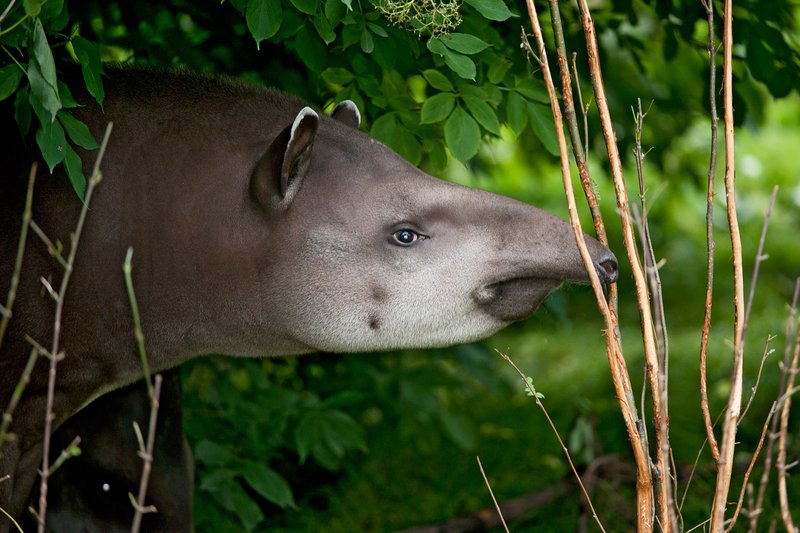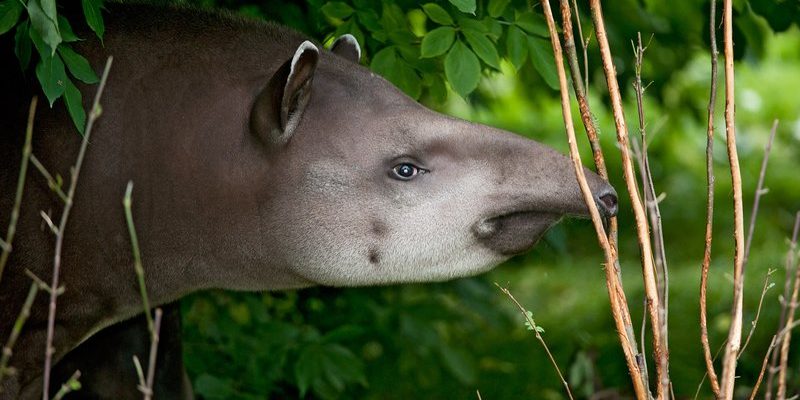
Tapirs are part of a fascinating family known as Tapiridae, which dates back around 60 million years. They roam the forests and grasslands of Central and South America, as well as Southeast Asia. With their distinctive snouts and stout bodies, they’ve been around for a long time, but their history is not just about survival; it’s also about adaptation and change. Let’s dive into the evolutionary journey of these captivating creatures.
Where It All Began: The Early Ancestors
The story of tapirs begins long ago, during a period called the Paleocene, around 65 million years ago. At this time, the Earth looked quite different. Forests flourished, and mammals were just starting to dominate after the extinction of dinosaurs. The ancestors of tapirs were small, hoofed creatures known as *Hyracotherium*. This little guy, often compared to today’s modern-day horses, was an agile, forest-dwelling animal.
Over time, these early ancestors evolved. They adapted to changing environments, developing features suited for various habitats. By the time we reached the Eocene epoch (around 55 million years ago), a newer group called *Lophiomys* emerged, which bore a closer resemblance to modern tapirs. This was a crucial point in tapir evolution, as it set the stage for the animals we recognize today.
The Rise of the Tapiridae Family
As the Eocene progressed, tapir-like creatures evolved into more distinct forms. The Tapiridae family began to take shape, characterized by their stout bodies and elongated snouts. Imagine a blend of characteristics from different animals, like a pig, a horse, and an elephant. This unique body structure helped tapirs thrive in their forest habitats, making it easier to browse on leaves and fruits.
The evolution of the tapir family tree didn’t stop here. Over the millennia, various species of tapirs took shape, ranging from the ancient *Tapirus indicus*, which lived in Asia, to the *Tapirus terrestris*, known as the Brazilian tapir. Each species adapted to its environment, showcasing the incredible versatility of tapirs. Some evolved to be larger, while others became smaller, depending on their habitats and available food sources.
The Ice Age and Tapir Survival
The Ice Ages brought about drastic changes to the Earth’s climate and landscape. Tapirs faced new challenges, including changing habitats and competition with other animals. Surprisingly, they managed to survive these shifting conditions. Unlike many mammals that went extinct during this period, tapirs adapted to the cooler climates by shifting their ranges and finding new food sources.
During this time, tapirs began migrating to different regions, with some even making their way to North America. Picture a tapir wandering through a frozen landscape, seeking out warmer areas. Their resilience during these harsh periods is a testament to their adaptability and evolutionary success. They learned to thrive in both dense forests and open grasslands, which helped them expand their populations.
The Modern Tapir: A Blend of Old and New
Today, there are four extant species of tapirs, each carrying a unique blend of ancient traits and modern adaptations. These include the Brazilian tapir, the mountain tapir, the Baird’s tapir, and the Malayan tapir. Each species has distinct traits but shares common features such as their stout bodies, short legs, and elongated snouts, which they use to forage for vegetation.
Modern tapirs prefer habitats that provide ample cover, like rainforests and swamps. They’re excellent swimmers, thanks to their large, webbed feet, which allow them to navigate through water with ease. Honestly, it’s pretty fascinating to see how they’ve held onto their ancient traits while adapting to modern environments. This adaptability has helped them survive despite various threats, including habitat loss and poaching.
Challenges Faced by Tapirs Today
Despite their long history of survival, tapirs are facing significant challenges today. The rapid destruction of their habitats due to deforestation and agriculture poses a serious threat. As forests vanish, tapirs lose the spaces they need to thrive. You might be wondering how such a resilient species is struggling now. Well, it’s a reminder that even the strongest creatures are vulnerable to human actions.
Additionally, tapirs are often hunted for their meat and skins, further endangering their populations. Conservation efforts are crucial to ensuring their survival. Initiatives like habitat restoration and legal protections help create a safer environment for tapirs, but these efforts require global awareness and action.
The Future of Tapirs: Conservation and Hope
The future of tapirs is uncertain, but there’s hope. Conservationists and organizations are working hard to protect these remarkable animals. Through education and awareness, people are learning about the importance of biodiversity and the role tapirs play in their ecosystems.
One approach to conservation involves creating protected areas where tapirs can roam freely without the threat of habitat loss. Strengthening local communities’ involvement in these efforts can also lead to successful conservation strategies. Moreover, innovative programs that promote sustainable agriculture can help balance human needs with wildlife preservation.
Final Thoughts: Celebrating the Tapir’s Legacy
The evolutionary history of the tapir is a captivating story of resilience and adaptation. From their early ancestors to the modern species we know today, tapirs have shown incredible strength in the face of challenges. As we explore their past, we also recognize the importance of protecting their future.
Understanding the evolutionary journey of the tapir reminds us of our responsibility to safeguard wildlife and their habitats. By learning about these unique creatures and supporting conservation efforts, we can help ensure that future generations can appreciate the legacy of this extraordinary animal. Let’s celebrate the tapir and work together for a kinder world where all species can thrive.

